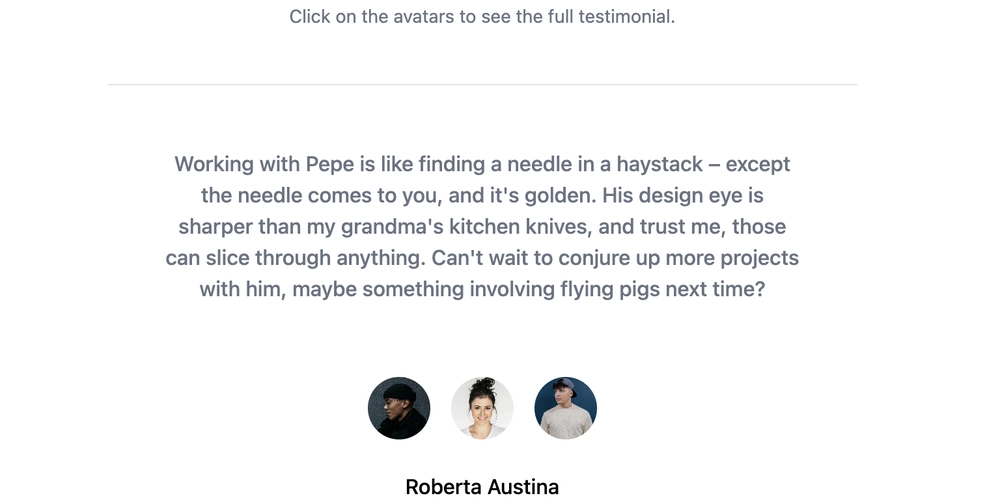
Build Dynamic Testimonials: Tailwind CSS, Alpine.js, and Astro Tutorial
Want to add dynamic, engaging testimonials to your website? This guide shows you how to create a sleek, interactive testimonial section using Tailwind CSS for styling, Alpine.js for interactivity, and Astro for templating. Let's dive into creating stunning testimonials!
Why Use Tailwind CSS, Alpine.js, and Astro for Testimonials?
Combining these technologies offers several advantages:
- Tailwind CSS: Rapidly style your testimonials with pre-built, customizable CSS classes.
- Alpine.js: Add interactivity with minimal JavaScript, creating a dynamic user experience.
- Astro: Build fast, optimized websites with component-based architecture, perfect for templating testimonials.
Setting Up Your Project: Astro and Tailwind CSS
First, you'll use Astro to generate templates, so you won't have to write the same code repeatedly. Then, put your data in an array and send it to the Alpine.js component.
Step-by-Step: Creating an Interactive Testimonial
1. Create the Astro Template
Use Astro's component structure to make a basic layout for your testimonial component. This template will house the testimonial data and Alpine.js logic.
2. Style with Tailwind CSS
Easily style your testimonials using Tailwind CSS classes. For example:
font-bold: Makes testimonial author name boldtext-gray-700: Sets the testimonial text color.py-4: Adds vertical padding.
Tailwind's utility-first approach allows quick customization and ensures consistent styling.
3. Implement Interactivity with Alpine.js
Alpine.js is perfect for adding interactivity. Use it to:
- Cycle through testimonials.
- Display different user ratings.
- Add animations or transitions.
Example:
This snippet creates a basic testimonial slider with "Previous' and "Next" buttons. Also, the Alpine.js x-data directive initializes the component with an array of testimonials (testimonials) and a current index to track the displayed testimonial. The text of current testimonials will be displayed.
4. Populate Testimonial Data
Store your testimonial data in an array of objects. Each object should contain the testimonial text, author name, and other relevant details.
Example:
Optimizing Testimonial Design for Engagement ("testimonial design" long-tail keyword)
1. Visual Appeal:
- Use clear, high-quality images of the testimonial authors.
- Incorporate brand colors to maintain consistency.
2. Make Testimonials Easily Readable:
- Use short paragraphs and bullet points to highlight key benefits.
- Ensure sufficient contrast between text and background.
3. Mobile Responsiveness:
- Testimonials should look and function perfectly on all devices.
- Use Tailwind CSS's responsive modifiers (e.g.,
md:text-lg,sm:text-sm).
Advanced Tips for Enhanced Interactivity ("interactive testimonials" long-tail keyword)
- Star Ratings: Display star ratings alongside testimonials to provide quick visual feedback.
- Carousel: Implement a carousel or slider using Alpine.js to showcase multiple testimonials ("testimonial carousel" keyword).
- Animations: Add subtle animations to make the testimonial section more engaging.
- Interactive Elements: Allow users to filter testimonials by category or rating.
Final Thoughts
By combining Astro, Tailwind CSS, and Alpine.js you can easily build interactive, visually appealing testimonials that boost credibility and improve user engagement.



















